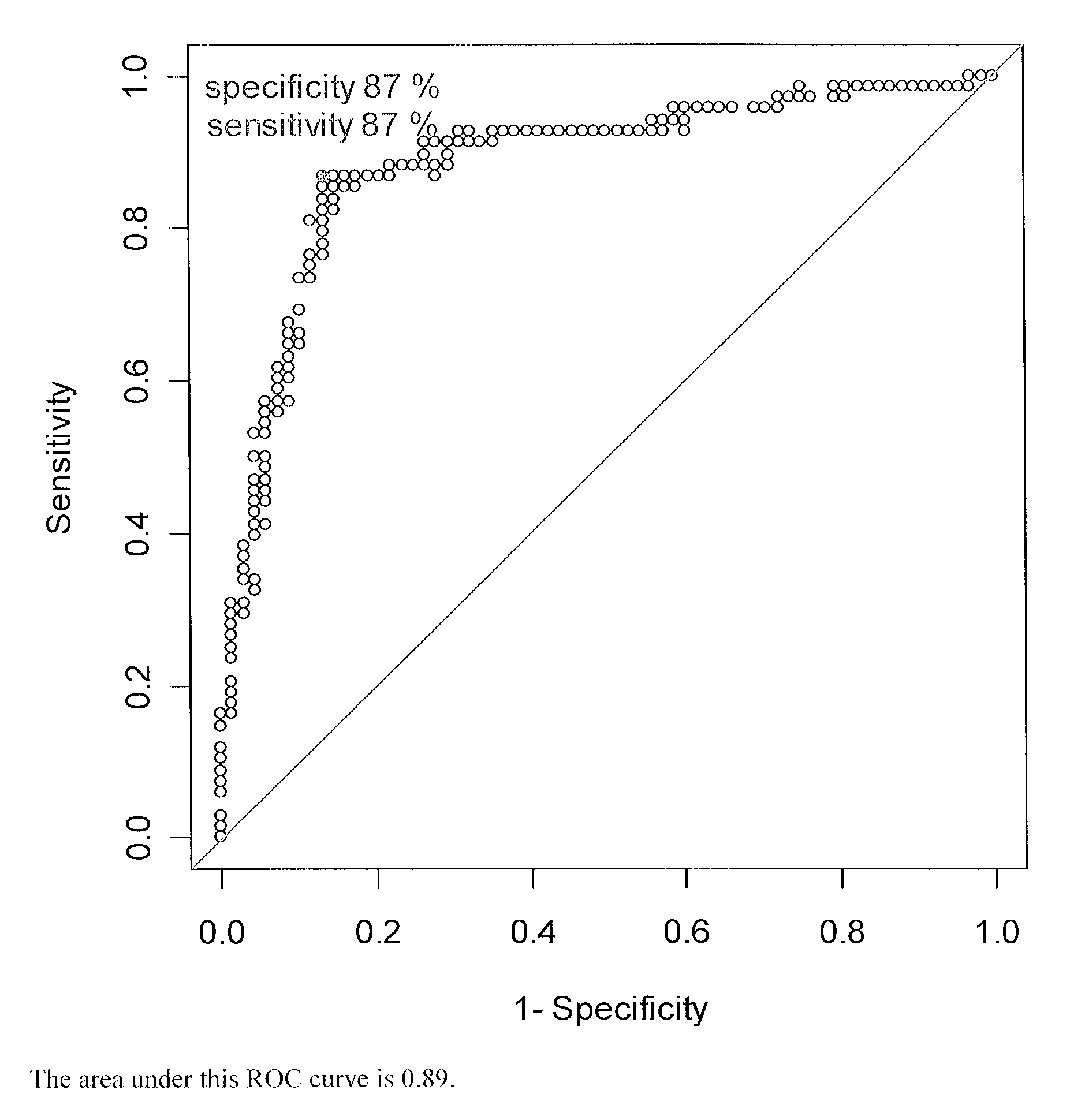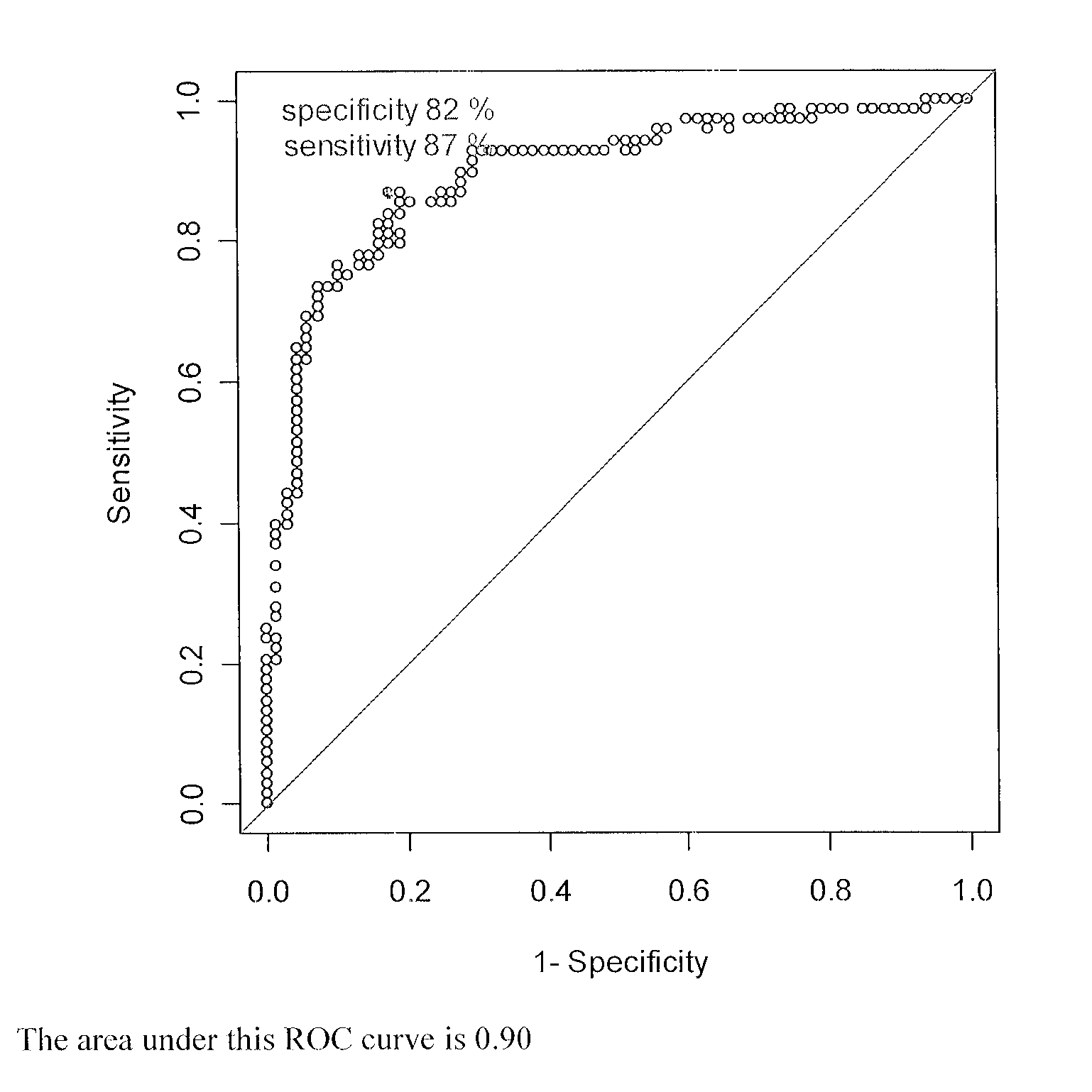Methods for detecting major adverse cardiovascular and cerebrovascular events
- Summary
- Abstract
- Description
- Claims
- Application Information
AI Technical Summary
Benefits of technology
Problems solved by technology
Method used
Image
Examples
example 1
[0066]This example describes the methodology used to identify analytes for major adverse cardiovascular or cerebrovascular events. Briefly, one hundred thirty-six (136) subjects were included in the study. A classification of the subjects into either disease or control categories was achieved by identifying subjects who experienced a major adverse cardiovascular or cerebrovascular event, defined as a myocardial infarction, percutaneous coronary intervention or death, within two years of an index cardiac catheterization.
[0067]Frozen plasma samples were obtained from a collection of samples obtained in a long-term study of individuals who had undergone cardiac catheterization at Duke University Medical Center (the CATHGEN Study). The plasma samples were from 136 study subjects, 68 disease cases and 68 matched controls (as defined below). The disease cases and controls were matched according to their coronary artery disease (CAD) index, age, gender and race. Some of the study subjects ...
PUM
 Login to View More
Login to View More Abstract
Description
Claims
Application Information
 Login to View More
Login to View More - R&D
- Intellectual Property
- Life Sciences
- Materials
- Tech Scout
- Unparalleled Data Quality
- Higher Quality Content
- 60% Fewer Hallucinations
Browse by: Latest US Patents, China's latest patents, Technical Efficacy Thesaurus, Application Domain, Technology Topic, Popular Technical Reports.
© 2025 PatSnap. All rights reserved.Legal|Privacy policy|Modern Slavery Act Transparency Statement|Sitemap|About US| Contact US: help@patsnap.com


